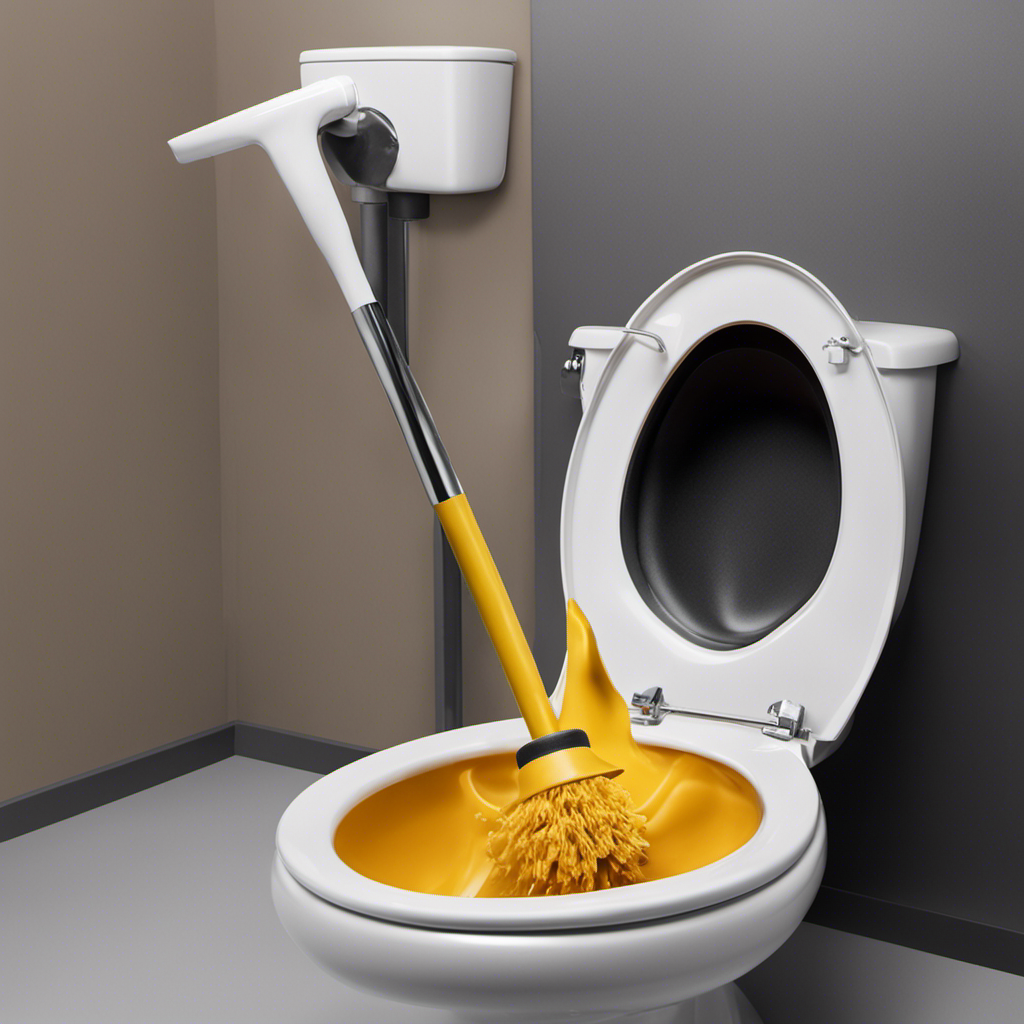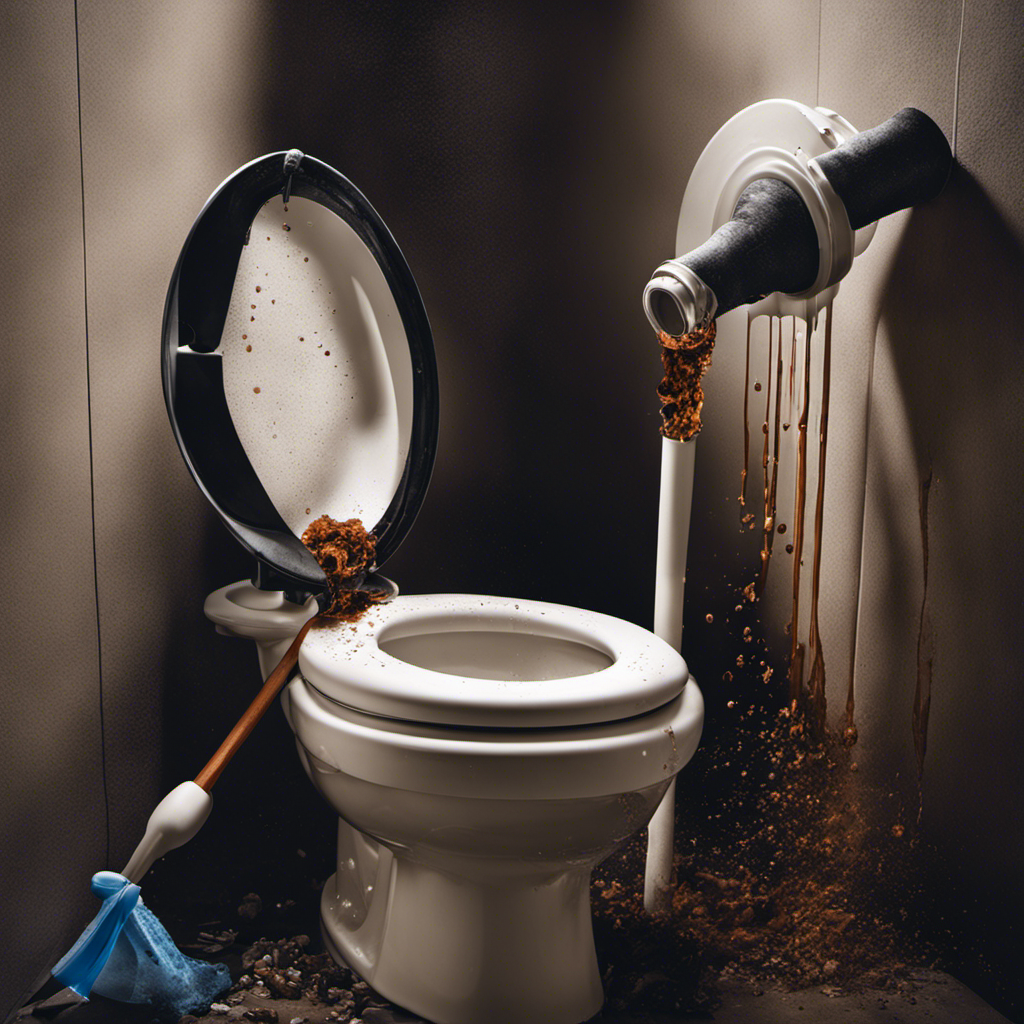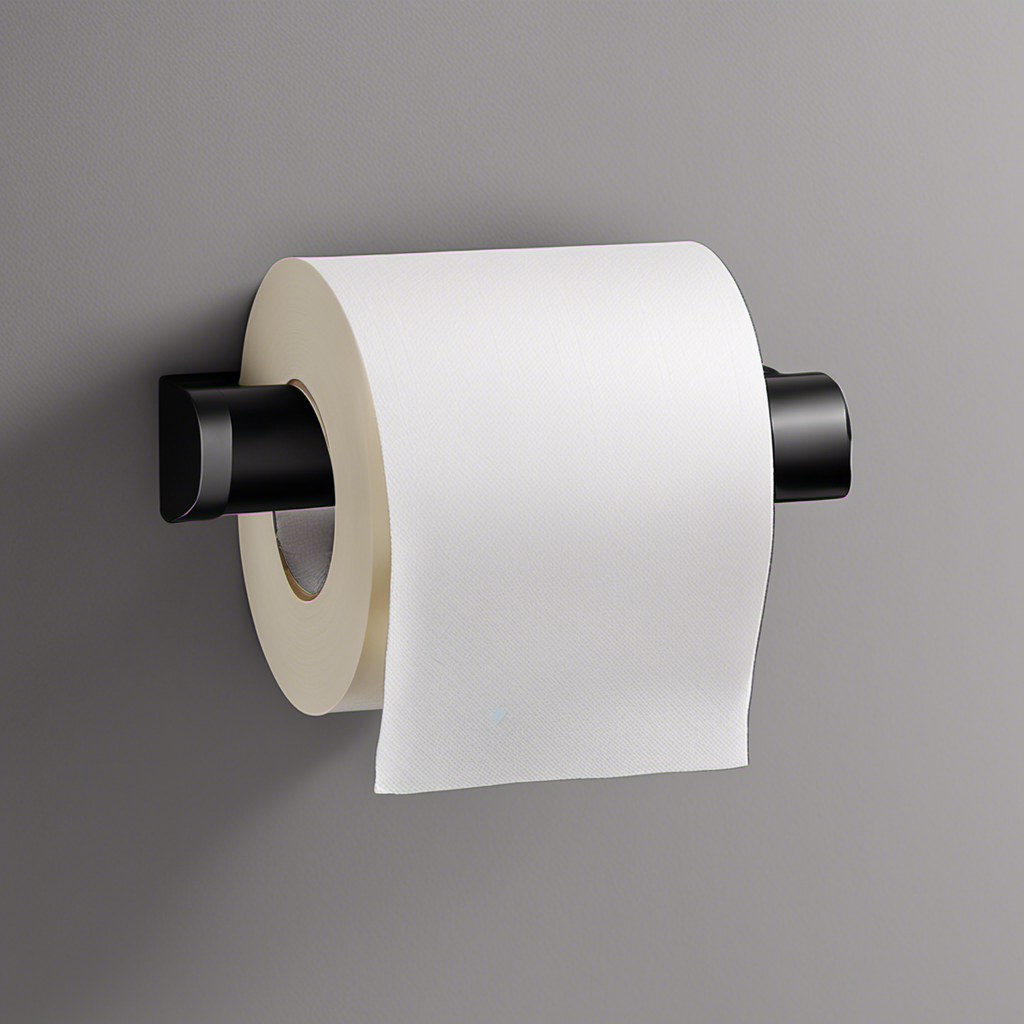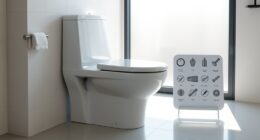So, you’ve found yourself in a rather… messy situation with a clogged toilet. Fear not, for I am here to guide you through the process of removing that pesky blockage.
In this article, I will share with you my expert knowledge on how to tackle this common household dilemma. With a few simple tools and a little determination, you’ll be able to restore your toilet to its former glory in no time.
Let’s dive right in, shall we?
Key Takeaways
- The use of a plunger and toilet auger are effective tools for unclogging a toilet.
- Precautions such as wearing protective gloves and goggles should be taken when unclogging a toilet.
- Regular maintenance and addressing slow-draining issues can help prevent toilet clogs.
- If DIY methods fail to unclog the toilet, it is important to call a professional plumber to avoid further damage or complications.
Tools You Will Need
To remove a clogged toilet, you’ll need a plunger and a toilet auger. These tools are essential for effective unclogging.
When it comes to toilet unclogging methods, using a plunger is a common and effective approach. It creates pressure and suction to dislodge the clog.
The toilet auger, on the other hand, is useful for more stubborn clogs that the plunger can’t handle. It is a long, flexible tool that can reach deeper into the pipes to break up the blockage.
Common causes of toilet clogs include flushing excessive amounts of toilet paper, flushing non-flushable items, and a buildup of waste and debris over time. With the right tools and knowledge, you can easily tackle these clogs and restore your toilet’s functionality.
Now, let’s move on to the precautions to take when unclogging a toilet.
Precautions to Take
When it comes to unclogging a toilet, it’s important to prioritize safety measures to avoid any accidents or injuries.
I will discuss the necessary precautions to take when dealing with a clogged toilet and provide recommendations for the protective gear that should be worn during the unclogging process.
Safety Measures When Unclogging
Always remember to wear protective gloves and goggles when unclogging a toilet to ensure your safety. It is important to take the necessary precautions to protect yourself from any potential hazards. To prevent toilet clogs, avoid flushing items such as wipes, tissues, and feminine hygiene products, as they can easily block the pipes. Hair, soap residue, and excessive toilet paper can also contribute to clogs. Regular maintenance, such as using a plunger or a toilet auger, can help prevent clogs from occurring. Additionally, keeping an eye on the water level in the toilet bowl and addressing any slow-draining issues promptly can help prevent clogs from worsening. By following these guidelines, you can minimize the chances of encountering a clogged toilet and ensure a smooth plumbing system.
| Common Causes of Toilet Clogs | Prevention Tips |
|---|---|
| Flushing inappropriate items | Educate household members about what can and cannot be flushed. Provide a trash can in the bathroom for disposal. |
| Excessive toilet paper | Use only the necessary amount of toilet paper and avoid overloading the toilet. |
| Hair and soap residue | Install drain screens or catchers to prevent hair and soap residue from entering the toilet drain. |
| Lack of regular maintenance | Use a plunger or a toilet auger regularly to keep the pipes clear. Address any slow-draining issues promptly. |
Recommended Protective Gear
Wearing protective gloves and goggles is essential for ensuring your safety while unclogging. When it comes to unclogging a toilet, it’s important to protect yourself from harmful chemicals and bacteria.
To do this, it is recommended to use cleaning products that are specifically designed for unclogging toilets. These products are usually formulated with powerful enzymes or chemicals that break down the clog effectively.
As for protective gloves, it is best to use heavy-duty gloves made of rubber or latex. These gloves provide a barrier between your skin and the cleaning products, preventing any potential skin irritation or chemical burns.
Additionally, goggles should be worn to protect your eyes from splashes and any potential airborne particles.
Step 1: Shutting off the Water Supply
First, make sure to shut off the water supply before attempting to remove the clogged toilet. This is an important step to prevent any further water damage or overflow.
Here are some tips to help you prevent clogged toilets and understand the common causes of toilet blockages:
-
Proper flushing: Teach everyone in your household to flush only toilet paper and waste down the toilet. Avoid flushing items like baby wipes, sanitary products, or cotton balls, as they can easily cause blockages.
-
Regular maintenance: Schedule regular inspections and maintenance for your plumbing system. This can help identify any potential issues before they become major problems.
-
Proper toilet usage: Educate everyone about the correct use of toilets. Encourage them to flush multiple times if necessary, rather than trying to flush everything at once.
By following these preventive measures, you can minimize the chances of facing a clogged toilet in the future.
Now, let’s move on to step 2: clearing the blockage with a plunger.
Step 2: Clearing the Blockage With a Plunger
To clear the blockage in your toilet, start by placing the plunger over the drain and applying firm pressure. This clearing technique, known as effective plunging, can help dislodge the obstruction and restore proper flushing. When using a plunger, it’s important to create a tight seal around the drain to maximize suction. Here is a table that outlines the key steps for effective plunging:
| Step | Description |
|---|---|
| 1 | Ensure the plunger is clean and in good condition |
| 2 | Add water to the toilet bowl to increase pressure |
| 3 | Place the plunger over the drain and push down firmly, then pull up forcefully |
Step 3: Using a Toilet Auger
After attempting to clear the clog with a plunger, it’s time to move on to the next step: using a toilet auger. This tool, also known as a ‘plumber’s snake,’ is specifically designed to break up and remove stubborn blockages in your toilet’s drain pipe. It consists of a long flexible metal cable with a coiled end and a handle at the other.
Using a toilet auger is straightforward and effective, making it a popular choice for dealing with toilet clogs. However, if you don’t have access to a toilet auger, there are alternative methods you can try. Some common toilet auger alternatives include:
- DIY drain snake: You can make your own drain snake using a wire coat hanger or a long, flexible plastic rod.
- Enzyme-based drain cleaner: These products use natural enzymes to break down organic matter and clear clogs.
Now, let’s explore some of the common causes of toilet clogs that may require the use of a toilet auger.
Step 4: Trying a Homemade Solution
Now, let’s see if a homemade solution can help you resolve the clog.
When faced with a stubborn clogged toilet, it can be tempting to reach for chemical drain cleaners or call a professional plumber right away. However, there are alternative methods you can try using common household items.
One popular homemade solution is the combination of baking soda and vinegar. Start by pouring half a cup of baking soda into the toilet bowl, followed by one cup of vinegar. Allow the mixture to fizz and bubble for about 30 minutes, then flush the toilet. This method can help break down the clog and clear the blockage.
However, if the homemade solution doesn’t work, it may be time to consider calling a professional plumber.
Step 5: When to Call a Professional Plumber
If the homemade solution doesn’t work, it’s best to contact a professional plumber. While attempting to fix a clogged toilet yourself can be cost-effective and convenient, there are times when it’s essential to call in the experts.
Here are two signs of a serious plumbing issue that indicate it’s time to hire a professional:
-
Persistent Clogs:
- If you’ve tried multiple DIY methods and the clog keeps coming back, it could be a sign of a more severe problem.
- Persistent clogs may indicate a blockage in the main sewer line or a deeper issue within your plumbing system.
-
Water Backing Up:
- If you notice water backing up from multiple drains or toilets, it’s crucial to seek professional help immediately.
- This could be a sign of a sewer line blockage or a problem with your septic tank, both of which require immediate attention.
Conclusion
In conclusion, dealing with a clogged toilet can be a frustrating experience. It’s like trying to navigate through a dense forest with no clear path ahead.
However, armed with the right tools and knowledge, you can overcome this obstacle and restore the flow of water in your toilet. Remember to approach the task with caution, as you would step carefully on a treacherous mountain trail.
By following the steps outlined in this article, you can become the fearless explorer who conquers the clog and emerges victorious.










